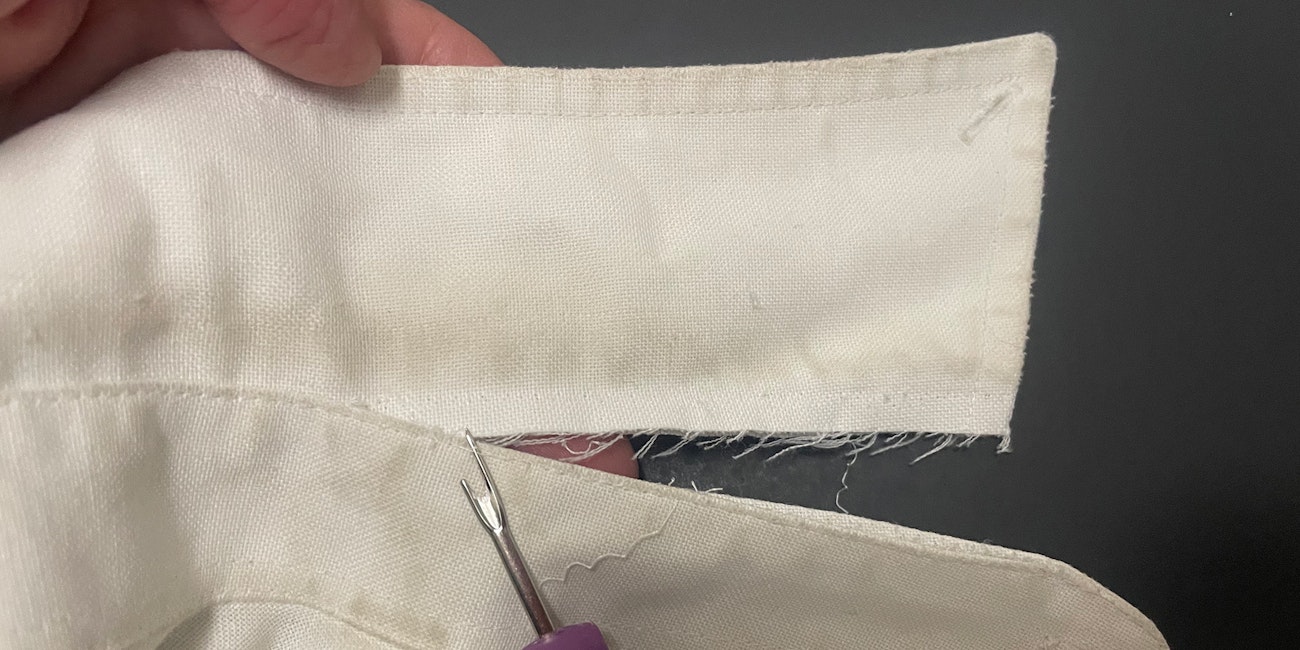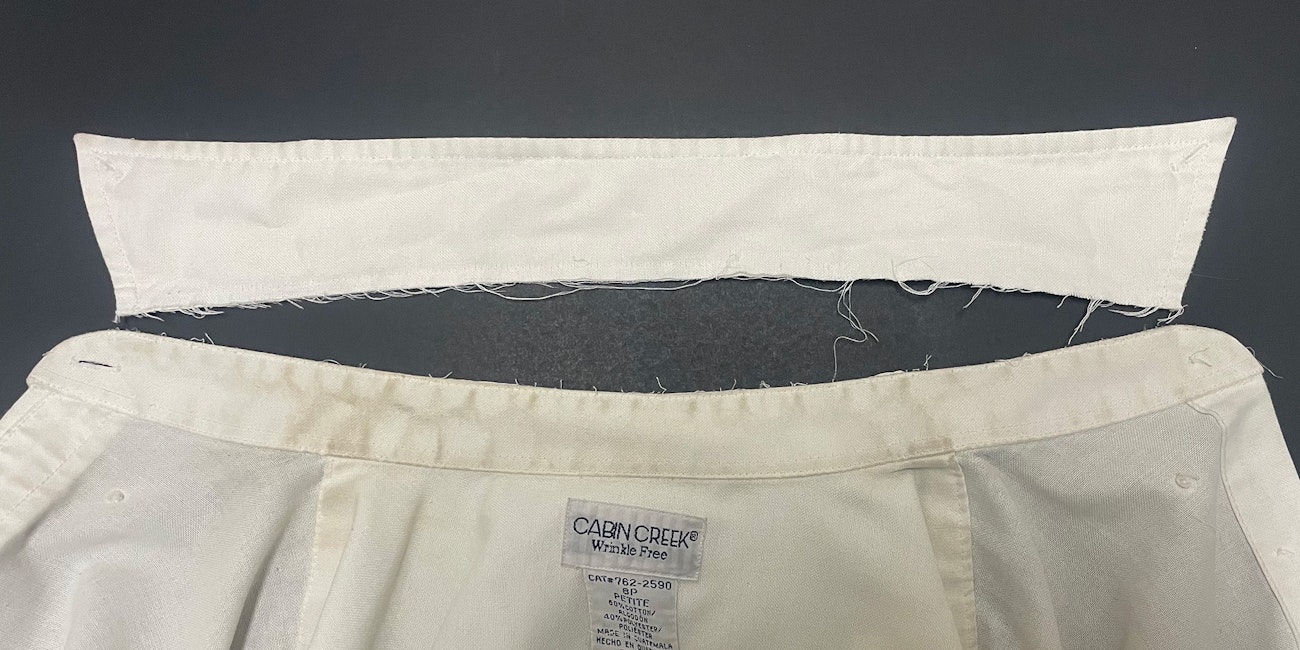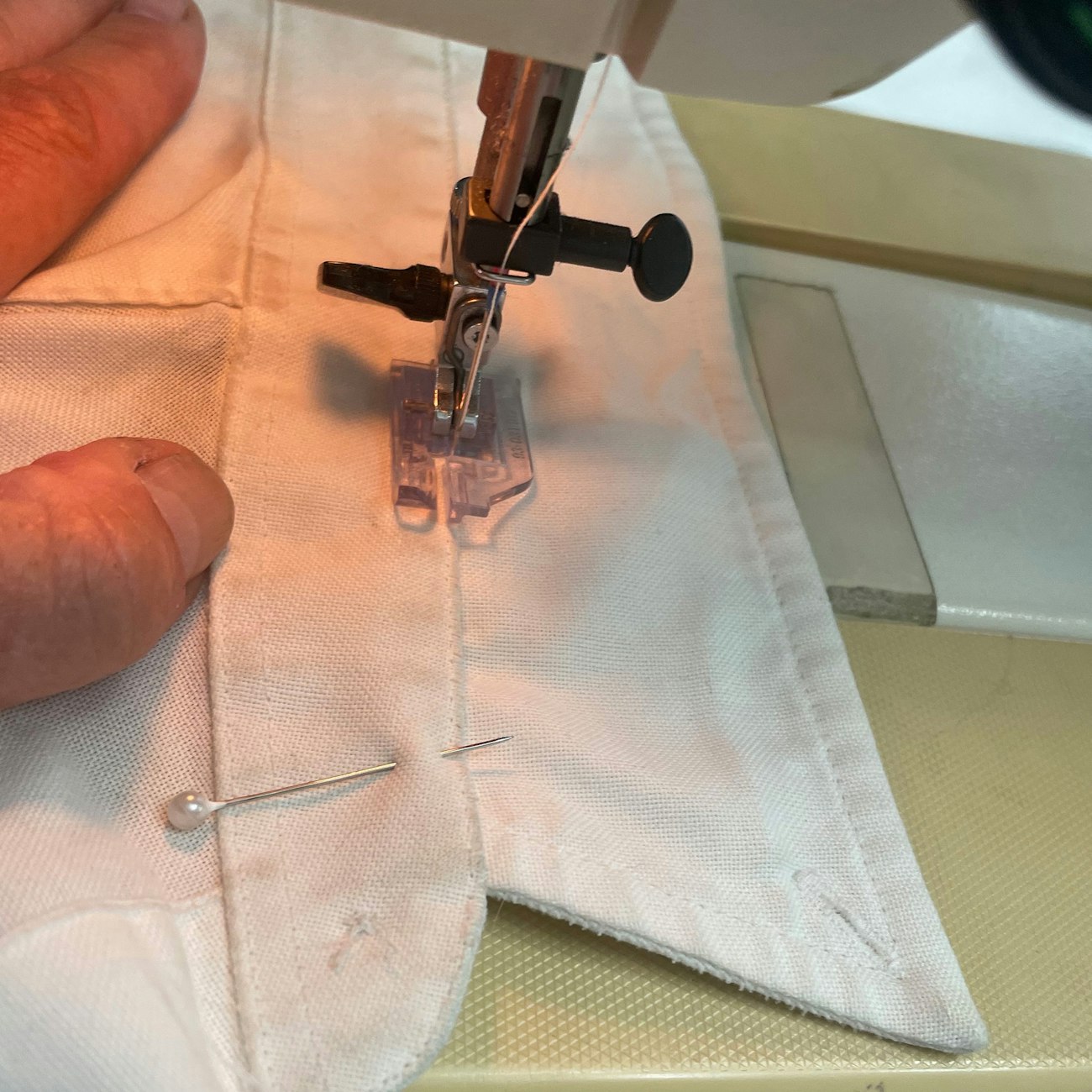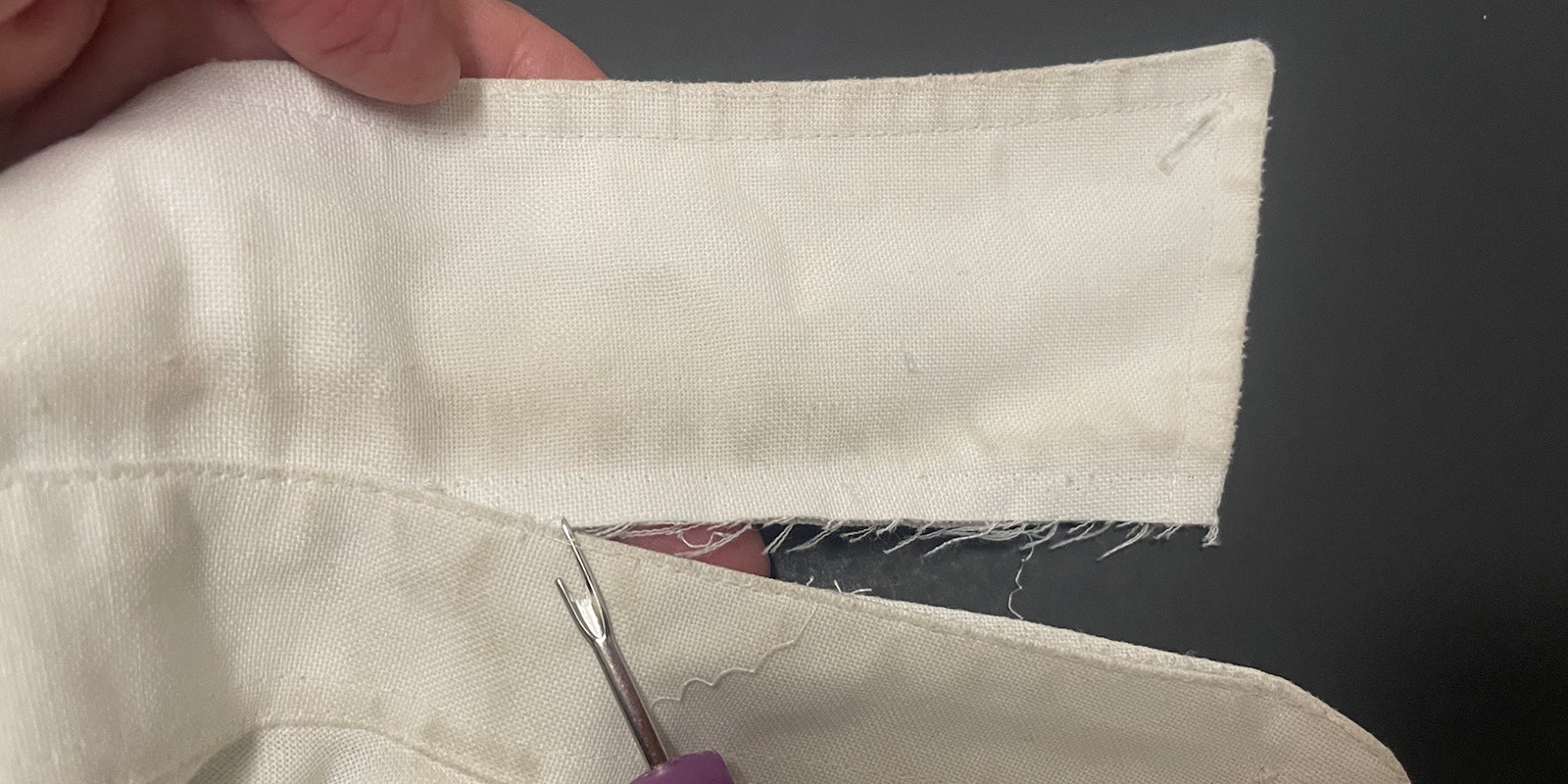“Turned” clothing was common in the nineteenth century, when textiles were quite expensive but most women were skilled seamstresses. Turning was the practice of carefully taking apart a garment at the seams and putting it together again with the interior face of the fabric to the exterior. Clothing was sometimes turned two or even three times!
Turned Fabric in Literature and Film
“Mama turned my dresses twice because we couldn’t buy calico,” comments Addie, a young girl growing up on a small farm during the Civil War in Candice F. Ransom’s picture book The Promise Quilt (see note 1). Mrs. Cratchit in Charles Dickens’s A Christmas Carol is presented as attending her family’s Christmas dinner “dressed out but poorly in a twice-turned gown, but brave in ribbons, which are cheap and make a goodly show for sixpence” (see note 2).
Scarlett O’Hara in Gone with the Wind, while living in Atlanta toward the end of the Civil War, contemplates “the eager competition [she faced,] furnished by the sixteen-year-olds whose fresh cheeks and bright smiles made one forget their twice-turned frocks and patched shoes” (see note 3). Although by then a widow with a child, she still hoped to use her beauty and charm to secure a wealthy husband, specifically Rhett Butler.
Scarlett herself suffered the embarrassment of wearing turned dresses, brooding, “There wasn’t a nice dress in Tara or a dress which hadn’t been turned twice and mended.” Disillusioned by her sad post-war appearance, “her scrawny neck and hungry cat eyes and raggedy dress,” Scarlett ponders the moss-green velvet curtains, the only remaining textile at her family plantation, Tara, that was not stained and worn after years of war. As her servant Mammy enters the room, she cries, “Scoot up to the attic and get my box of dress patterns, Mammy ... I’m going to have a new dress” (see note 4).
These are just a few examples of the nearly forgotten technique of turning. Kathryn Squitieri, a fashion historian and textile conservator, explains the concept of twice-turned garments:
Twice-turned means that you wore out the wrong side too and have turned the fabric back to the original right side. Thrice turned means that you’ve once again turned the right side of the fabric inside. I’ve seen this used more often in the eighteenth rather than the nineteenth century, but it was still done if either the wrong side of the fabric was just as nice as the right side, or if you were terribly poor (see note 5).
The Practice in Action
I decided to try my hand at turning the collar of a well-worn shirt, purchased at a garage sale over 20 years ago and worn regularly since then. The collar showed signs of wear and was stained from perspiration, but the underside was still somewhat new looking.
 Removing the collar with a seam ripper.
Removing the collar with a seam ripper.
I first removed the collar from the collar stand with a seam ripper.
 The collar removed to flip and pin in place.
The collar removed to flip and pin in place.
Flipping the collar revealed that the underside looked cleaner and more presentable. Finally, I made a quick running stitch on the sewing machine to reattach the collar. I now have a shirt I can continue wearing for another 20-plus years!
 Stitching the collar together to renew the shirt.
Stitching the collar together to renew the shirt.
The process of turning just a shirt collar was fairly easy, but the thought of turning an entire garment is rather daunting. In our throwaway culture, we’d rather buy new clothing than mend our worn-out garments. Much of the problem is that textiles are now cheap but many people don’t sew. While turning our clothing probably isn’t a realistic solution for most, we should use this historical practice as an example of ways we can all reduce our textile footprint.
Notes
- Candice F. Ransom, The Promise Quilt (New York: Walker & Company, 1999).
- Charles Dickens, A Christmas Carol and Other Christmas Writings (London: Penguin UK, 2003), 36.
- Margaret Mitchell, Gone with the Wind (New York: Macmillan Publishers, 1936), 317.
- Mitchell, 544–545.
- Nan Turner, Clothing Goes to War: Creativity Inspired by Scarcity in World War II (Bristol, UK: Intellect, 2022).
Nan Turner worked as a fashion designer in New York, Paris, and San Francisco before returning to Davis, California, in 2010 to obtain a master’s degree in textiles and clothing. She then taught in the Textiles and Clothing Department at UC Davis, including creating a study abroad program: Fashion Marketing in Paris, France. Her book, Clothing Goes to War: Creativity Inspired by Scarcity in World War II, was published in July 2022.

